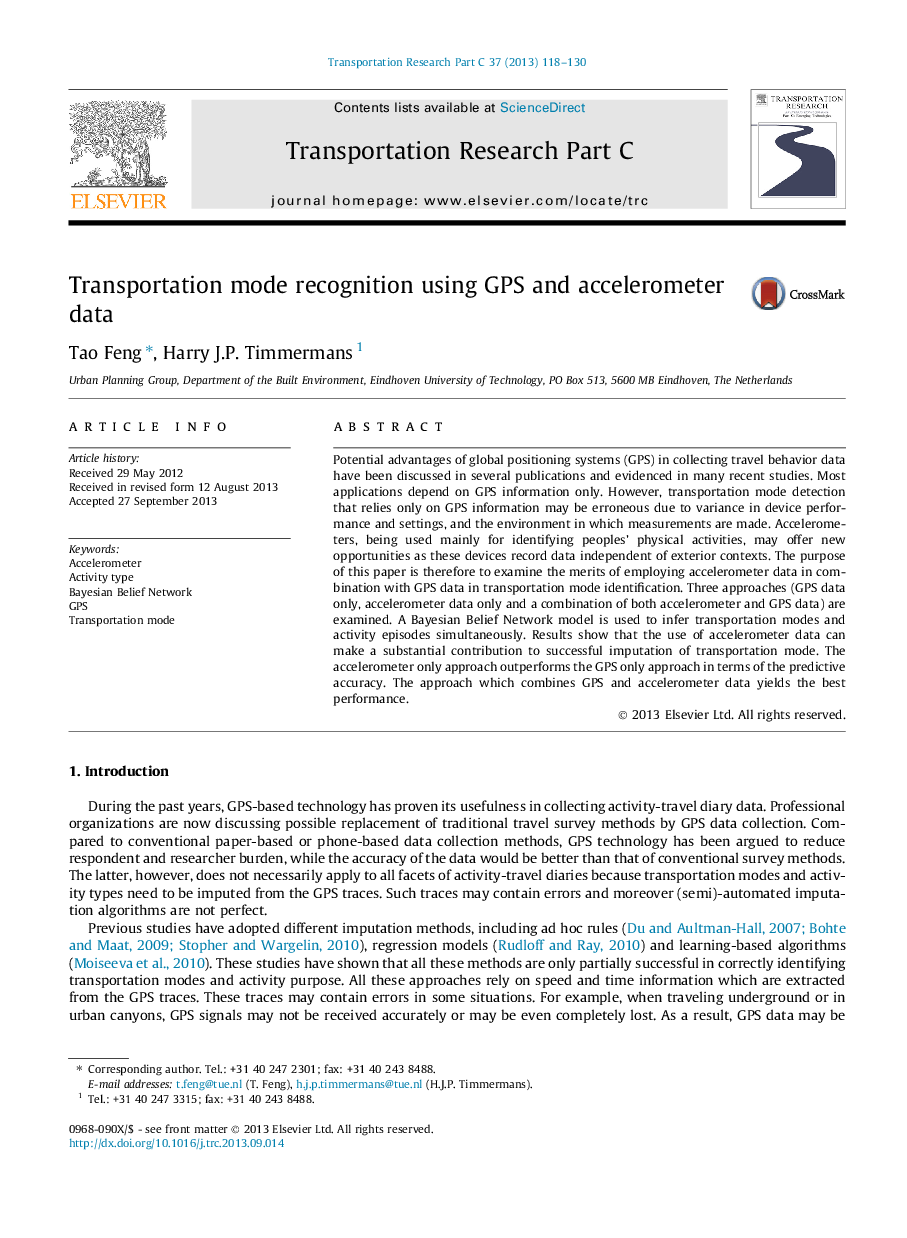| Article ID | Journal | Published Year | Pages | File Type |
|---|---|---|---|---|
| 525338 | Transportation Research Part C: Emerging Technologies | 2013 | 13 Pages |
•We investigated the merits of accelerometer data in detecting transportation modes.•We examined three approaches: GPS only, accelerometer only and both accelerometer and GPS data.•We used the Bayesian Belief Network method.•Accelerometer data made a substantial contribution to recognize transportation modes.•The combination of GPS and accelerometer data performs best.
Potential advantages of global positioning systems (GPS) in collecting travel behavior data have been discussed in several publications and evidenced in many recent studies. Most applications depend on GPS information only. However, transportation mode detection that relies only on GPS information may be erroneous due to variance in device performance and settings, and the environment in which measurements are made. Accelerometers, being used mainly for identifying peoples’ physical activities, may offer new opportunities as these devices record data independent of exterior contexts. The purpose of this paper is therefore to examine the merits of employing accelerometer data in combination with GPS data in transportation mode identification. Three approaches (GPS data only, accelerometer data only and a combination of both accelerometer and GPS data) are examined. A Bayesian Belief Network model is used to infer transportation modes and activity episodes simultaneously. Results show that the use of accelerometer data can make a substantial contribution to successful imputation of transportation mode. The accelerometer only approach outperforms the GPS only approach in terms of the predictive accuracy. The approach which combines GPS and accelerometer data yields the best performance.
